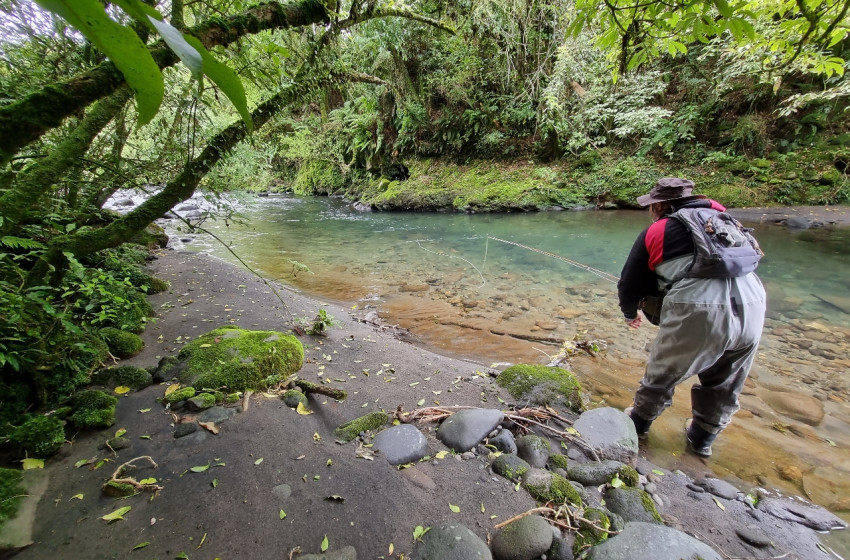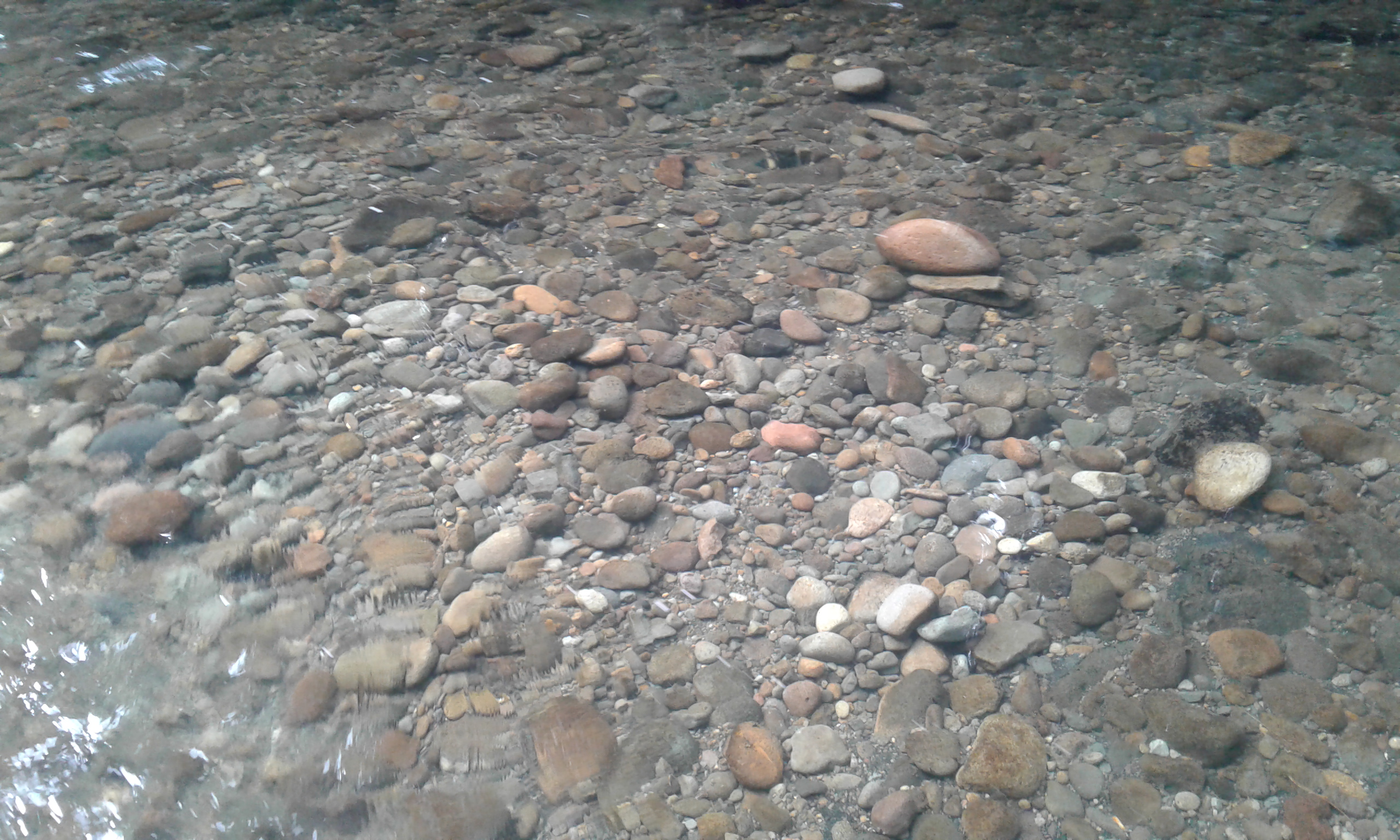Reel Life March 2023
- Taranaki
- 15/03/2023

Already a month into autumn and it is definitely starting to feel like it some mornings.
River water temperatures are also dropping, encouraging trout in rivers like the Manganuioteao to begin moving upstream into the middle reaches, providing plenty of fishable water to have a go at.
River flows have remained steady over the past month with just enough rain to keep base flows above mean annual low flow levels, but not so much that wading becomes difficult.
The rain forecast this week will also give rivers a bit of a flushing flow to help clear algae off the rocks.
The higher than usual base-flows over much of the summer have suited both spin and fly fishers, with enough water to use a veltic lure in some of the smaller streams and not too much flow that fly fishers would have a difficult day.
Above Right: Sight fishing in the upper Taranaki Ringplain (Photo – Bart Jasma)
Winter Season
April is the last month of the summer fishing season so be sure to make the most of the sections that close on April 30.
Winter season licenses are available from the 1st of April, and although there is less water to fish due to sections closing to protect trout spawning, the areas that remain open do produce some good fishing and are definitely worth a try.
For example, the entire Manganuioteao River mainstem remains open until June 30, and the river downstream of Ruatiti Road Bridge is open all year.
Check the regulation guide to see which river sections close on April 30th.
Taranaki anglers can also purchase a winter season licence to experience the great fishing available in the Rotorua lakes through to September 30th.
Trout Spawning

Spawning gravel which has had a trial scrape by a trout to see if it is suitable for a redd.
From mid to late April, brown trout will be starting to pair up for spawning from May onwards.
Rainbow trout will start pairing up later in May and will spawn later than brown trout, with much of Taranaki’s rainbow spawning occurring in July.
The pair will need to find suitable habitat to dig a redd or nest.
The ideal location for a redd is often in gravel substrate of around 30 - 60mm diameter that is in an area of accelerated flow with high oxygen levels, often towards the tail end of a pool.
A trial scrape of the gravel is done by the female fish, and if it is suitable she will excavate a depression, release her eggs to be fertilized by the male and then re-cover them with gravel.
If the area is not suitable, the pair will continue searching until they find a better location.
The protection of areas where trout spawning occurs is important to safeguard natural recruitment and the productivity of our trout fisheries and the closure of reaches from the 30th of April minimizes the risk of damage to redds and spawning fish.
Tight Lines
Jacob Morison, Taranaki Fish & Game Officer.